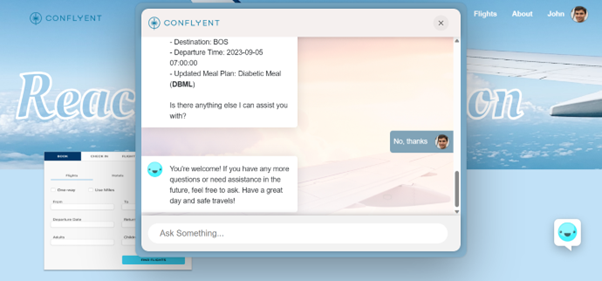
Cybersecurity Awareness Training: Arm Your Team Against Digital Threats
While most organizations invest in state-of-the-art security solutions, there’s often an overlooked vulnerability that can be easily exploited – The Human Element. This weakest link in the cyber security chain is the root cause of 82% of data breaches, including social engineering attacks and errors or misuse.
To address this inherent vulnerability and build a resilient security posture, businesses should prioritize employee training and awareness. In this blog, we’ll discuss why humans are often the Achilles’ heel of cybersecurity, and how training employees can help you mitigate risks to keep your organization and employees safe.
Why do Employees often fall prey to Cyber-Attacks?
Unlike machines programmed to follow specific protocols, human behavior is unpredictable and easily influenced. A lapse in judgment or a simple oversight can provide cybercriminals with the opening they need to infiltrate an entire network. Below are some of the causes that may unwittingly lead employees to security downfall.
- Lack of Awareness:
Lack of awareness can inadvertently lead to security breaches, as individuals may unknowingly engage in actions that compromise the organization’s digital defenses. Approximately 88% of all data breaches are triggered by an employee’s lack of awareness, and users are responsible for 9 out of 10 data breaches.
- Social Engineering:
Cybercriminals exploit human psychology, using tactics like phishing and social engineering to manipulate employees into aiding data breaches.
- Weak Passwords:
It is not uncommon for employees to utilize weak passwords, or worse, share them with colleagues. These lax practices create vulnerabilities that attackers can exploit. Weak passwords are the root cause of 81% of all data breaches
- Insider Threats:
Internal threats, often underestimated, come from employees with insider knowledge. They’re a moderate concern for 74% of organizations. These insiders can misuse their access, jeopardizing data, and security.
Tips to train your employees against cyber threats.
While implementing tech solutions for security is a formidable line of defense, ultimately it is your employees who use these techs that can either uphold or compromise the integrity of your business. This is why employee training should not be an afterthought but an integral part of your comprehensive cybersecurity strategy.
Awareness Programs:
Comprehensive cybersecurity awareness programs are a cornerstone of modern organizational security. Notably, companies that invest in cybersecurity training for their employees enjoy a substantial advantage, being 70% less likely to suffer the damaging consequences of a data breach. In an ever-changing digital landscape, these programs are essential for organizations seeking to proactively defend against a broad spectrum of cyber threats and vulnerabilities.
Phishing Awareness:
Cyber security awareness training for employees helps them learn to identify phishing emails and social engineering attempts, reducing the likelihood of falling for scams. This training equips them with the skills and knowledge needed to mitigate risks and minimize the impact of security threats. It fosters a culture of preparedness and rapid response, reinforcing the organization’s commitment to a secure digital environment.
Password Security:
‘The training program’ places a strong emphasis on the critical aspect of cultivating and maintaining unique passwords within the organization’s cybersecurity framework. Employees also learn best practices for securely storing and updating passwords, strengthening the organization’s defense against security breaches.
Incident Response:
Employees receive thorough training in incident response protocols, enabling them to act swiftly and effectively in case of a security breach. Businesses that have well-trained employees and incident response strategy in place is predicted to benefit from the $10.5 trillion annual cost of cybercrime.
Ethical Behaviour:
Employee training goes beyond technical skills, instilling a sense of responsibility and ethical behavior. Through interactive modules, employees learn about the consequences of unethical actions, promoting a collective commitment to safeguarding the organization’s assets. Furthermore, this training equips employees with a deep understanding of the ethical aspects of cybersecurity decisions, enhancing their role in protecting sensitive data and the organization’s reputation.
Don’t Gamble with Cybersecurity, Build a vigilant workforce!
As October marks Cyber Security Awareness Month, it offers organizations a valuable occasion to underscore the significance of cyber safety and commit to strengthening the cybersecurity awareness of their workforce.
By taking proactive steps to address these vulnerabilities, companies can not only bolster their security measures but also foster a vigilant and informed employee base. Investing in comprehensive cybersecurity education is vital to minimize human error-related risks and promote cyber resilience within the organization.

Thangaraj Petchiappan
Chief Technology & Innovation Officer at iLink Digital
Author
Thangaraj Petchiappan leads the company’s digital transformation initiatives for Fortune 500 clients. He focuses on enhancing infrastructure automation and integrating advanced bot solutions across various industries, including healthcare, oil & gas, manufacturing, telecom, retail, and NPO sectors. As the founder of the AI-Powered Cybersecurity iLab in Texas, he spearheads the development of innovative AI and ML solutions. Additionally, Thangaraj shares his expertise as a keynote speaker, cloud advocate, and coach, offering guidance on digital transformation and technology leadership.





















